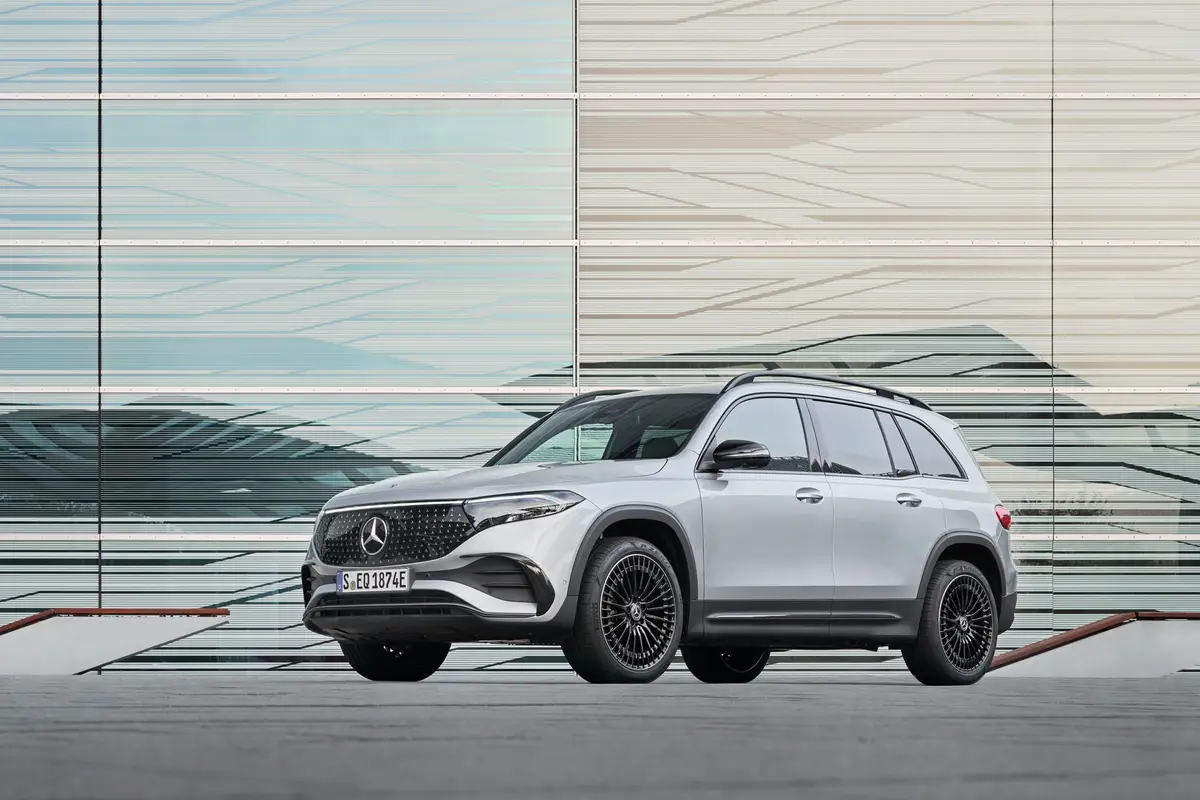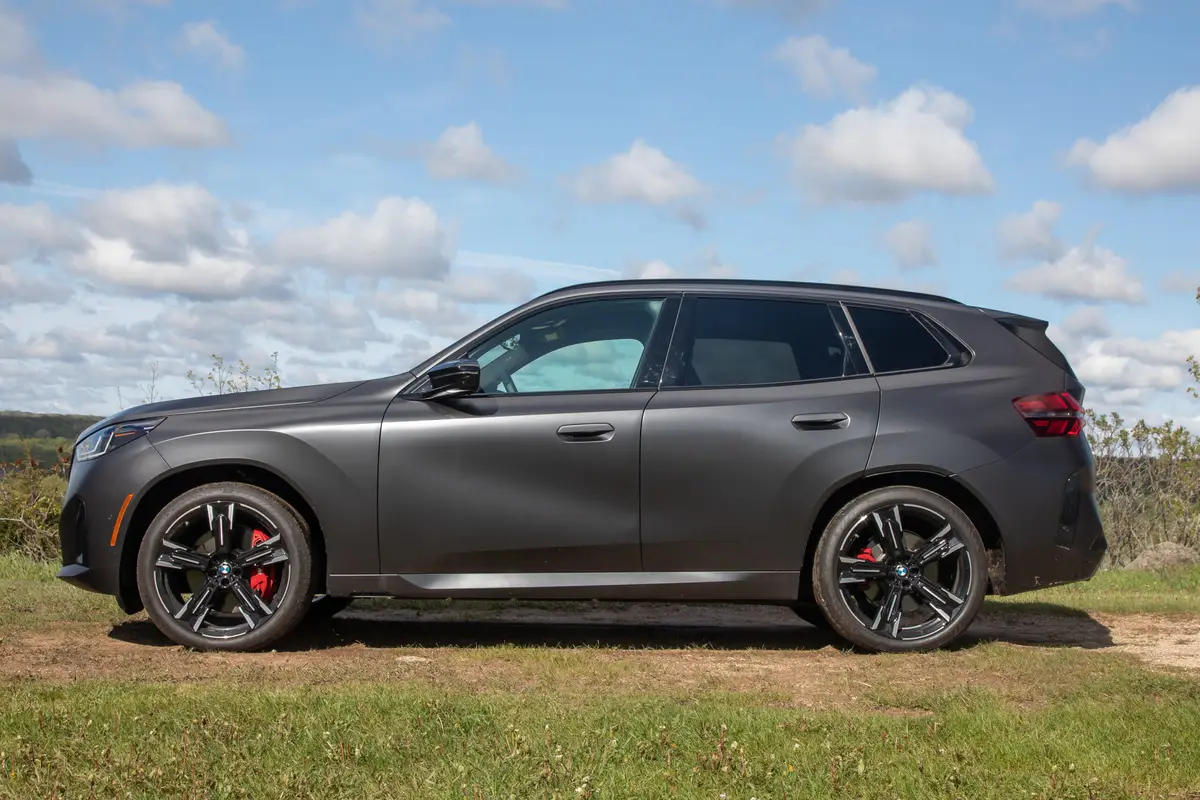chicagotribune.com's view
When the Nissan Altima arrived in the 1993 model year, it became the rage, especially among women.
It was clean and uncluttered and attractively aerodynamic.
And who can forget the ad campaign in which a ball bearing traveled a smooth, uninterrupted path along each crevice separating Altima body panels as a sign of just how well it was built; or the one in which the full wine glasses were placed on the hood to show that even when the engine was revved, not one drop of the bubbly was shaken, much less stirred.
For the 1998 model year, which starts July 10 for Nissan, the automaker brings out Gen II of the compact Altima, rival to the Honda Accord and Toyota Camry.
Jerry Hirshberg, president of Nissan Design International, which was in charge of updating what was a pretty nice car when it appeared in the 1993 model year, says of the remake:
“I think this new car takes all the potential of the original and expands on it–like a child that grew up just the way you hoped it would.”
True only if you hoped your son or daughter grew up to be invisible.
The original had excitement; the new one is burdened with a case of the blahs. It just doesn’t stand out in a crowd. Clean now looks cluttered with all sorts of character lines scattered hither and yon, which means front to back, top to bottom.
If Altima was in charge of the Miss America contest, it would substitute hair shirts for the swimsuit competition.
Of course, Camry and Accord sheet metal won’t start the heart pumping, either, but Altima is exceptionally plain. In coming up with a new formula, designers left out a vital ingredient–pizzazz.
Nissan tipped its hand on the auto-show circuit, when it unveiled a prototype of the ’98, finished in what best could be called air-sickness green.
But, alas, it’s not as much styling that will sell this car as it is price. The base ’98 Altima XE starts at $14,990, down $859 from ’97; the GXE at $17,990, down $1,508; the SE at $18,490, down $1,209; and the GLE at $19,890, down $1,009.
Nissan insists yen/dollar currency exchange rates had nothing to do with the price cuts. It said it was prompted to take a closer look at the sticker after rival Toyota slashed the price on Camry for ’97 and is leading the race to unseat the Ford Taurus and become the industry’s top-selling car for ’97.
Nissan said some of the ’98 price reduction came from the savings realized by sourcing locally more parts and components, such as engine and transmission, and offering more technologically advanced but less-expensive components such as a smaller and lighter anti-lock brake system that cost only $499 for ’98 versus the $995 system offered for 1997.
There also was savings from such things as making roof pillars out of one piece of metal rather than joining three.
We tested the GLE, and though the price went down by $1,00 9, Nissan added an eight-way power driver’s seat and AM/FM stereo with cassette, compact-disc player and six speakers as standard.
Value tends to make a vehicle look awfully good in the eyes of some consumers.
Standard features on the base XE include body-colored bumpers and door handles, tinted glass, reclining front bucket seats, cut pile carpeting, dual cupholders, power windows, dual power mirrors, electric rear window defroster, 15-inch tires and intermittent wipers.
The GXE adds to that air conditioning, power door locks, four-speaker AM/FM radio with CD player and 60/40 split folding rear seat backs.
The GLE we tested offers all that plus leather seating, eight-way power driver’s seat, 4-speed automatic transmission, sound-system upgrade to 100 watts and six speakers plus cassette player, body-colored power sideview mirrors and remote keyless entry.
Nissan paid attention to detail, and the ’98 GLE boasts of such little itemsa washable placemats under each cupholder, an enlarged glove box capable of holding a legal note pad and with a door that gently opens without dropping on and banging the passenger’s knees; less-forceful deployment air bags (no side bags yet.
Maxima gets them for ’98, Altima later); a 20 percent increase in body rigidity and a 1.6-inch wider track to improve ride and handling.
Also, the steering-wheel is made of an aluminum/metal composite material to reduce road vibration feedback to the driver; body panels use dent-resistant “baked hard” steel to reduce nagging dents and dings from wayward shopping carts; door pockets hold stowage compartments; and the instrument panel and center console have space to stow business cards, coins, CDs, cassettes and tissues.
Also, a power cord in the lower dash serves cellular phones or radar detectors, though the 2.4-liter, 150-horsepower, 4-cylinder is built more for mileage (22 m.p.g. city/30 highway) than for raw power despite improved low-end torque and reduced pedal effort for better off-the-line performance. Rear doors have child safety locks. Hinge-mounted hooks on the hood are designed to stop the hood from entering the passenger compartment in a collision.
Nissan also paid attention to its 700,000 current Altima owners who said when Gen II arrived, they’d like a little more room and comfort.
The ’98 is built on the same platform as the ’97, but vehicle width was expanded by 2 inches and length increased by 4.
Other than the ultraconservative and sedate design, there are some problems, the main one probably being the sharply raked windshield and rear window, which helps reduce the co-efficient of drag for those who appreciate physics, but increases glare off the glass upfront for those who appreciate obstructed vision.
Oddly, the glare tends to bounce off the crease lines in the hood along the fenders and creates the illusion that the hood isn’t closed tightly.
Depending on your viewpoint, you will love or hate the commercials planned for Altima. Mr. K (a representation of Yukata Katayama, who brought Nissan to the U.S. 35 years ago and is the father of the Z car) will play a less prominent role (we cast our vote for loving the commercials based on that alone). He is typically used to hold a sign while standing in a field, which will all make sense once you see the spots.
For those who thought Mr. K and Barbie and Ken dolls got far more attention than the cars did this year, you’ll start to understand the method in that madness for 1998.
“We needed to break through the clutter of 38,000 car ads on TV each year,” said Patrick Doody, Midwest regional vice president for Nissan.
Mr. K, along with Barbie and Ken, did that, with Doody stating that in terms of consumer recognition, the ads placed just behind the Budweiser frogs for viewer appeal.
The ’98 Altima is the first in what will be a series of new vehicles at Nissan, one every six months for 48 months, including a new Frontier pickup truck this fall and a sport-utility vehicle built off the same platform in the summer of ’99 as a 2000 model to compete against the Toyota RAV4.
Frontier and the new SUV will be built at Nissan’s Smyrna, Tenn., plant. The Nissan Sentra will be moved to a plant in Mexico to make room. Nissan says it will continue to build the 200SX off the same platform as the Sentra but is unclear whether it will be assembled in Smyrna or Mexico.
>> 1998 Nissan Altima GLE Wheelbase: 103.1 inches Length: 183.5 inches Engine: 2.4-liter, 150-h.p., 16-valve 4-cylinder Transmission: 4-speed automatic EPA mileage: 22 m.p.g. city/30 highway Base price: $19,890 Price as tested: $21,238. Includes $499 for ABS and $849 for p wer glass sunroof. Add $470 for freight. Goes on sale July 10. Pluses: While more equipment has been added as standard, the price has been whittled b y about $1,000. First redesign since it bowed in 1993 model year. Quieter and roomier cabin. Dual air bags are the new lower-speed deployment variety. Price of optional ABS reduced to $499 from $995. Minuses: ABS still optional. The 2.4-liter could use a few more horses. Creases along each side of hood reflect just enough sun to give the impression that the hood is open. Redesign is very conservative. >>
Latest news


2025 BMW X3 M50 Quick Spin: What Happened?

